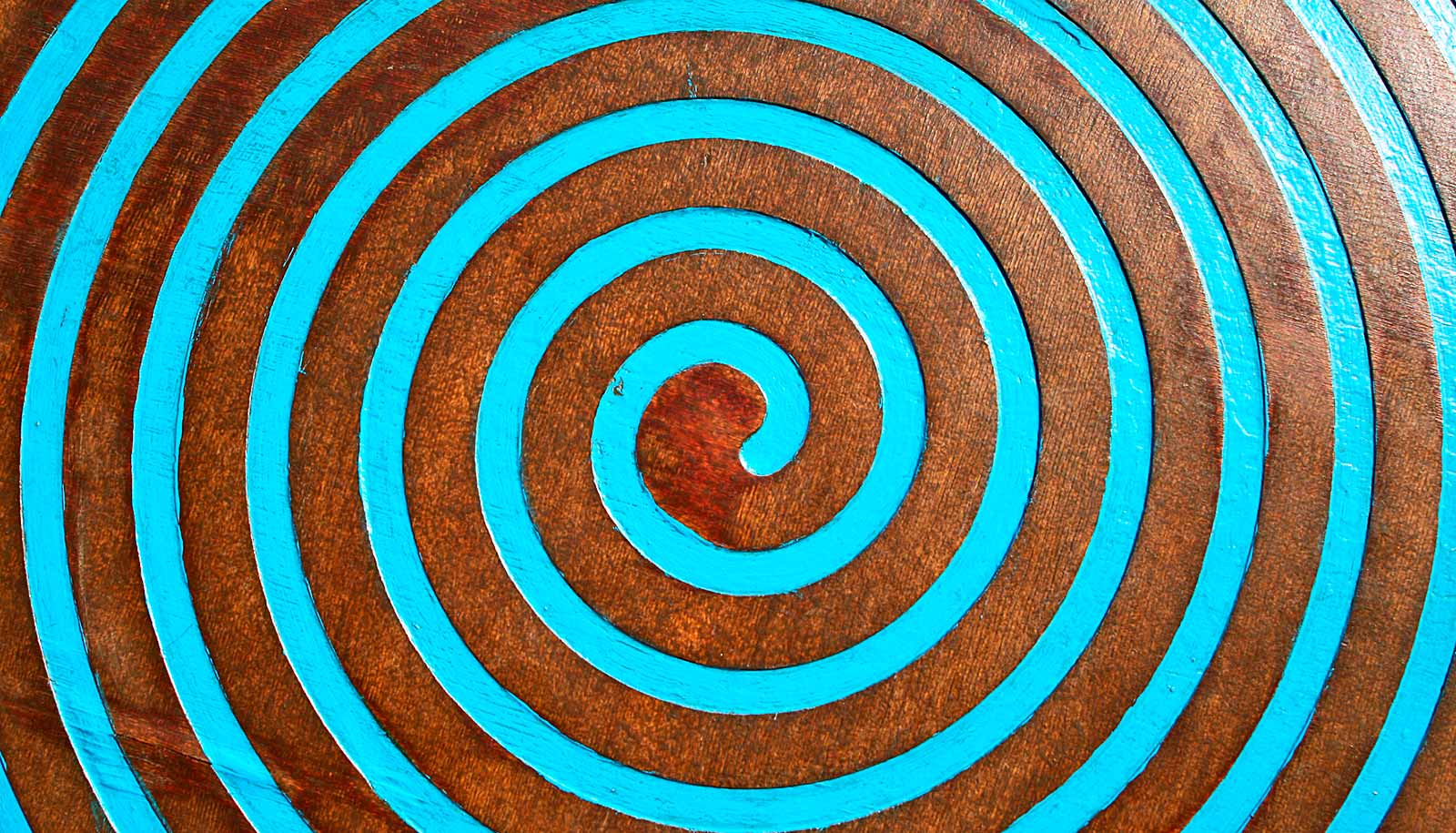New research offers a preview of what will likely happen in our own cosmic backyard when our Milky Way combines with the neighboring Andromeda galaxy and their respective central black holes smash together.
No need to worry, though—this process is several billion years away and takes a billion years itself.
At the center of almost every galaxy, there is a gigantic black hole, a massive marker of a star’s collapse into infinite density. Akin to the comparably infinitesimal cell, the black hole is the “nucleus” of the galaxy. When galaxies collide and merge, their black holes unleash ripples in the form of gravitational waves. Now, astrophysicists have learned more about how galaxy mergers produce the supermassive cousins of smaller black holes.
“The number of close, merging galaxy nuclei we found was striking.”
In the largest-to-date survey of galactic nuclei in near-infrared light, using high-resolution images from NASA’s Hubble Space Telescope and the W. M. Keck Observatory in Hawaii, the researchers analyzed 96 galaxies from the Keck Observatory and 385 galaxies from the Hubble. The Hubble observations represent over 20 years’ worth of snapshots and 38 different observation programs from its vast archive.
The researchers conducted simulations of galaxy mergers and compared them with the observations. Their results appear in the journal Nature.
The images also provide a close-up preview of a phenomenon that must have been more common in the early universe, when galaxy mergers were more frequent. The team targeted galaxies with an average distance of 330 million light-years from Earth. Many of the galaxies are similar in size to the Milky Way and Andromeda galaxies.
Cosmic dust-ups
Galaxy mergers create a chaotic swirl of cosmic dust that can keep the circling dance of two black holes hidden from most telescopes. Previous studies mostly captured colliding galaxies when their black holes were about 10 times further apart than those captured in this study. The clarity of observations in the present study is thanks to near-infrared instruments, such as at Keck Observatory, that can see through the dust.
“X-ray observations are a great way to find dust-obscured black holes, so I wasn’t surprised that we found an association with galaxy mergers,” says study coauthor Laura Blecha, an assistant professor of physics at the University of Florida. “But the number of close, merging galaxy nuclei we found was striking.”
The team first searched for visually obscured, active black holes by sifting through 10 years’ worth of X-ray data from the Burst Alert Telescope (BAT) aboard NASA’s Neil Gehrels Swift Telescope, a high-energy space observatory. “Gas falling onto the black holes emits X-rays, and the brightness of the X-rays tells you how quickly the black hole is growing,” explains lead author Michael Koss of Eureka Scientific Inc.
The researchers combed through the Hubble archive, identifying those merging galaxies they spotted in the X-ray data. They then used the Keck Observatory’s super-sharp, near-infrared vision to observe a larger sample of the X-ray-producing black holes not found in the Hubble archive.
Bulked-up black holes
To verify their results, the researchers compared the survey galaxies with 176 other galaxies from the Hubble archive that lack actively growing black holes. The comparison confirmed that the luminous cores found in the researchers’ census of dusty interacting galaxies are indeed a signature of rapidly growing black-hole pairs headed for a collision.
“Computer simulations of galaxy collisions show us that black holes grow fastest during the final stages of mergers, near the time when the black holes interact, and that’s what we have found in our survey,” says Blecha. “The fact that black holes grow faster and faster as mergers progress tells us galaxy encounters are really important for our understanding of how these objects got to be so monstrously big.”
The black holes grow at a fast clip as they engorge themselves with their cosmic food, and, being messy eaters, they cause the infalling gas to blaze brightly.
“I looked at where the simulated mergers produced luminous, rapidly growing black holes compared to where we found them in the real mergers,” notes Blecha. In both cases, this speedy growth occurs during the last 10 million to 20 million years of the union. The Hubble and Keck Observatory images captured close-up views of this final stage, when the bulked-up black holes are only about 3,000 light-years apart—a near-embrace in cosmic terms.
Catch a gravitational wave
When the two supermassive black holes in each of these systems finally come together in millions of years, their encounters will produce strong gravitational waves.
The Laser Interferometer Gravitational-Wave Observatory (LIGO) has already detected gravitational waves that the collision of two stellar-mass black holes produced. Observatories such as the planned NASA/ESA space-based Laser Interferometer Space Antenna (LISA) will be able to detect the longer-frequency gravitational waves from supermassive black hole mergers, which are at least a million times more massive than those LIGO has detected.
Future infrared telescopes, such as NASA’s planned James Webb Space Telescope and a new generation of giant ground-based telescopes, will provide an even better probe of dusty galaxy collisions by measuring the masses, growth rate, and dynamics of close black-hole pairs. The Webb telescope will also be able to look in mid-infrared light to uncover more galaxy interactions so encased in thick gas and dust that even near-infrared light cannot penetrate them.
Adaptive optics systems in the next generation of very large-diameter ground-based telescopes that are being built will also study these galaxies at even higher resolutions (for example, the Thirty Meter Telescope, the European Extremely Large Telescope, and the Giant Magellan Telescope).
The Hubble Space Telescope is a project of international cooperation between NASA and the European Space Agency.
Source: University of Florida



